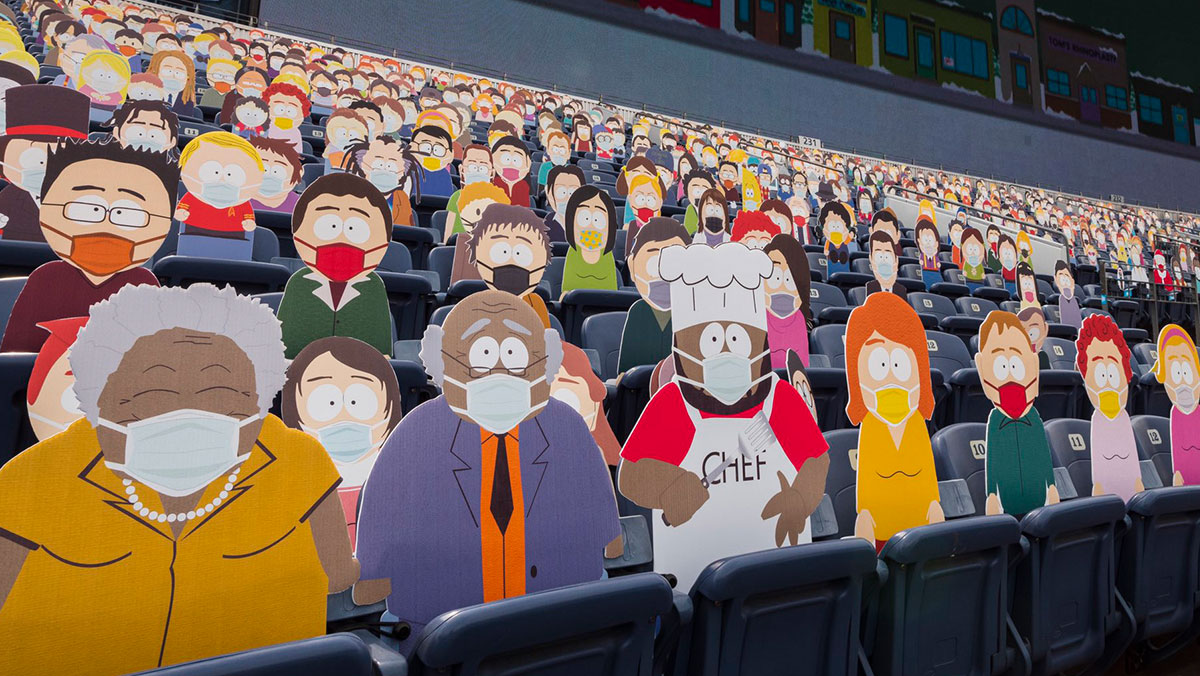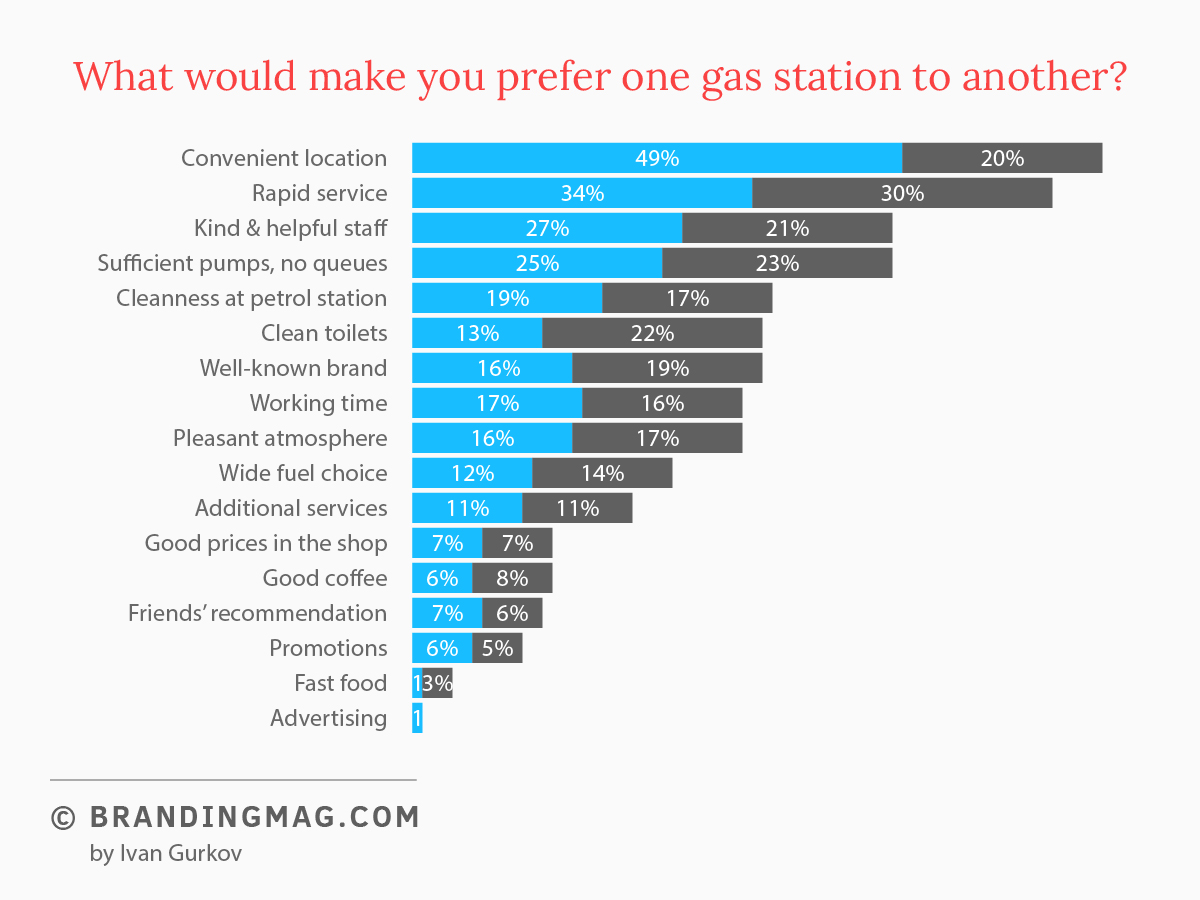
At the end of September 2020, the stadium in Denver, Colorado was full of an unusual crowd. The 1,800 fictional cutouts, characters from the fictional town of South Park, Colorado were the audience of the very real game of Denver Broncos against Tampa Bay Buccaneers. At the time, the National Football League allowed only a limited number of fans to attend the matches in person due to the ongoing coronavirus epidemic, and this was the perfect occasion for the cartoon characters to fill the seats. The funny event made headlines in all national news and sports media. “South Park jokes never fail to crack me up”, “One of the best parts of the game”, “THEY TOOK OUR JOBSSSSS” – a myriad of comments and shares filled social networks. With 4 billion impressions registered and $100 million in earned media value, Adweek placed this stunt in the top 3 of the Media Plan of the Year 2021. Actually, it was the perfect announcement of the upcoming 50-minute episode of South Park Pandemic Special, which started the twenty-fourth season of the animated show.
Campaigns like the South Park one do something very interesting – they make a lot of noise without big budgets in paid media and reach the right people without chasing them by targeting tools. Such campaigns are very different from the usual marketing communications and show us the great turn in the advertising fundament. A principle of how brands have to speak to people in order to be truly heard.
“The greatest quality of ads today is their quantity.”
For more than a century and a half, the media has been at the center of the advertising model. Advertisers paid the media that collect eyeballs – news, sports, music, movies, entertainment, etc. Advertisers paid and, along with the content that attracts people, they ran their ads. Something like a sugar cube on which you put medicine to make the child take it. And we, the audience, accepted that the ads and the content we chose to watch were one. For decades, advertising has been an integral part of our television experience. Today, the attitude is different – advertising is what interrupts your video on YouTube. And the advertising model of buying mass media broke.
We, the people, have developed a new culture of media consumption. Everyone now has a 5G phone in their pocket that connects us to all the information in the world, and this has changed our relationship with brands in two ways:
- We control the information. We don’t need ads to tell us how to solve our problems. We can find exactly what we are interested in, at the very moment when we are interested. Not when it’s time for TV commercials, or when Instagram has decided to show us a sponsored video. The time is when we decide. The modern customer journey is a user-controlled process in which the customer chooses when to receive information and what that information is about. Something like advertising content on demand.
- We control the media. We don’t have to watch what we don’t want. We have been influenced by new models of non-advertising streaming platforms such as Netflix, HBO, and Hulu, as well as non-interruptive advertising models of Meta and other social networks, in which you simply scroll through the ads without taking up your time. As a result, when we sit down to watch a movie, we expect a movie, not commercials. We open YouTube to watch funny videos or music, not for ad pre-rolls.
Here is the modern rule that will sadden mass advertising channels: Advertising that we did not look for ourselves is just spam. Do you know where the word “spam” comes from? In a series of Monty Python’s Flying Circus, the characters read the menu in a restaurant and find that each dish is actually prepared solely by Spam – a popular brand of canned spiced ham at the time. You order beans with bacon with sausage and Spam and receive Spam with Spam. That’s how was made the meaning of spam as something cheap that you do not want on your plate, but it pops up everywhere.
Today, spam is the standard in the advertising industry. We are not even talking about the traditional TV mass marketing, which in most countries in Europe broadcasts commercials for 20% of television time – 4.8 hours a day. Look at social media marketing – at its heart is to create a large number of audiences based on demographics, interests, etc., which you can bombard with cheap and numerous messages. According to HubSpot, Facebook’s click-through rate is 0.85%, and Google’s Display Ads one is 0.35%. This means that for every 1 person who clicks on the ad, they have spammed between 120 and 300 people. To get to one, they spam between 120 and 300. And they call this targeted marketing. And Shopify calls it competitiveness and recommends that 20% of expected business revenue be invested in Facebook ads. What about YouTube’s claim of having 30% ad viewership? Anyone who has opened YouTube at least once in their lifetime will realize that this phenomenal coefficient is due to the six-second unskippable pre-rolls that YouTube serves in sets of two. Isn’t this brazen card-stacking that convinces us of the non-existent KPIs of the dying media machine?
The greatest quality of ads today is their quantity. This is the ideology of spam. The one we don’t want on our plate. We don’t want to try it and we don’t want to see it at all. Spam is the exact opposite of the goal of marketing – to connect businesses with people.
People don’t want spam. That’s why businesses don’t want spam.
Contemporary advertising management advice: Today, you do not have to place your advertising message in media with a lot of views. Today, advertising itself has to collect views. Your commercial offering and your product should collect views. Each market activity of the company must express a simple and clear promise, which demonstrates the brand in such a way that people themselves choose to engage.
In 2020, I’ve worked with an international fuel company, for which we conducted a marketing survey with 10,000 respondents in Eastern Europe. One of the questions was, “What would make you prefer one gas station to another?” I guess it will not surprise you that only 1% of people answered “advertising”. But between 5% and 6% (depending on whether the site is in a city location or out-of-town) would try another gas station because of the promotional offers. Between 6% and 8% will be tempted by good coffee, 11% will prefer you if you wipe the windshields while they pay at the checkout, and 22% will choose the gas station with cleaner toilets. Having a good sanitation worker is 22 times more effective marketing than having good advertising. And it’s probably 220 times cheaper.
What is the conclusion from this chart?
Effective marketing today is not a glamorous claim on YouTube, Instagram, Facebook, TikTok, and other viral media. You market effectively by managing multiple contact points and creating the conditions for people to touch, try, and make their own conclusions. So do the funny characters at the Colorado stadium and the diligent gas station managers. They convince you of the value of their offer by creating opportunities for you to see for yourself. The advertising was upgraded to first-person singular communication. “I saw, I tried, I know.” Advertising has become an experience.
Spam media platforms are becoming ineffective.
Around 20% of the revenue for Facebook spam, more budget for Google paid search, not to mention the traditional media – radio, television – just think what will happen to the numbers behind the Customer Acquisition Cost formula even if they managed to attract customers as before.
Let’s imagine that we no longer rely on ‘spam media’.
Can we deploy our marketing activities and grow our business with a smart platform for customer relationship management? A platform, a combination of customer service, customer help & support, customer success, product management, offering management, CRM, and subtle communication, which to become the basis for planning, delivering, and measuring managed customer experience at any relevant touch-point. People who see for themselves and convince themselves.
The advertising industry today has the unique opportunity to solve the problem of marketing communication on 3 levels, becoming creative again and finding how to:
- not spam consumers from paid channels;
- consequently help brands be heard by consumers;
- and solve their own problem of how agencies can bring much more value to brands.
This is a new line of thinking for everyone in the industry – the South Park campaign and campaigns like it – with the brand promise (which is definite) and delivered targeted, even delivered personally, attractive to its consumer segment, and extremely effective as a budget. Let’s stop proceeding like step-by-step trained MBA experts and feel the reality around us. Let’s look at the market, which does not stop changing, because it is a part of life, which doesn’t stop changing. Let’s hear what people say, what they expect from us, and what they think about our ads. Then we will see for ourselves, in the first-person singular, that about the long tradition in spam-marketing we can exclaim with one last “Oh my God, they killed Kenny!”.
Cover image source: South Park Twitter account
